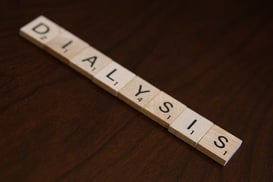INTRODUCTION:
PVDF and nitrocellulose membranes are both used in Western blotting and have various different characteristics, however a common question asked is "Why do PVDF membranes require a methanol soak?".
Check out this blog for more on the differences of the membranes:


 Once proteins have been separated and resolved by SDS-PAGE or 2D electrophoresis, the proteins are visualized using different staining procedures. For this purpose, most laboratories worldwide use three common protein staining techniques: Coomassie brilliant blue, silver staining or fluorescent staining. So, how do you know which stain will be best suit for mass spectrometry? Here are some things you need to consider to help you come up with the right decision.
Once proteins have been separated and resolved by SDS-PAGE or 2D electrophoresis, the proteins are visualized using different staining procedures. For this purpose, most laboratories worldwide use three common protein staining techniques: Coomassie brilliant blue, silver staining or fluorescent staining. So, how do you know which stain will be best suit for mass spectrometry? Here are some things you need to consider to help you come up with the right decision. Basically, there are two methods that are commonly used in the preparation of protein samples to make them suitable for long-term storage and compatible with downstream applications - dialysis and gel filtration. So, how do you know which one to use? Here are some things you need to consider if you want to increase your chances of making the right decision.
Basically, there are two methods that are commonly used in the preparation of protein samples to make them suitable for long-term storage and compatible with downstream applications - dialysis and gel filtration. So, how do you know which one to use? Here are some things you need to consider if you want to increase your chances of making the right decision.


